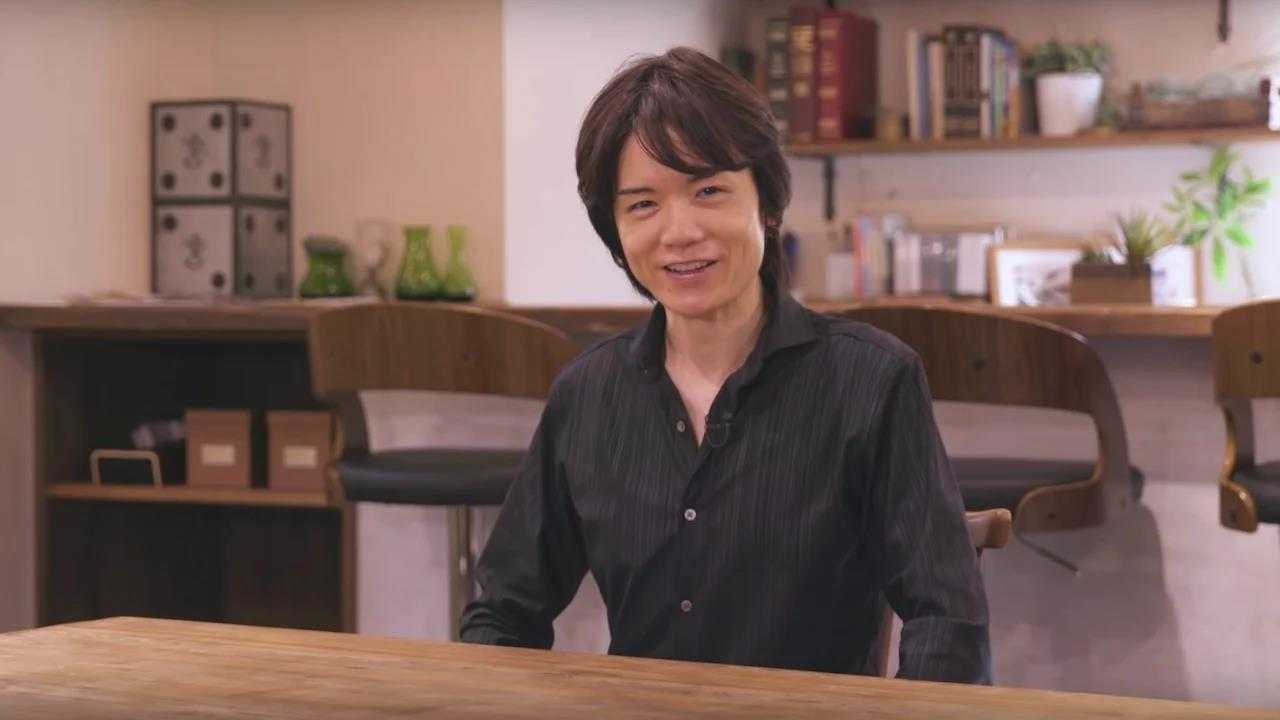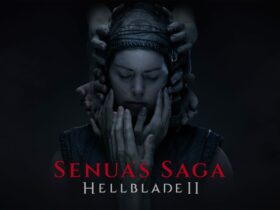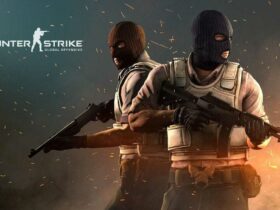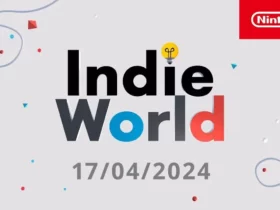After so many game design masters, here’s one capable of marrying several different styles: from Kirby to Smash, today we’re talking about Masahiro Sakurai
After six dates spent talking about the masters of game designreturning to the Big N with Masahiro Sakurai we wanted to do something special. After all, to his magnum opus Super Smash Bros. Ultimate we have dedicated no less than thirty guides; it is more than natural, therefore, that for the father of Kirby do something big. With Shigeru Miyamoto, Hideo Kojima, Yoshiaki Koizumi, Hironobu Sakaguchi, Hideki Kamiya and Goichi Suda we have limited ourselves to a gallery of images, but today we will opt almost exclusively for video on Youtube. In addition to the full-bodied presentations of the Smash fighters subtitled in Italian, in fact, the volcanic designer He opened a YouTube channel a few months ago (subtitled in English) in which he talks about himself and his philosophy as a designer (besides always looking half his age).

Light breeze | In game design school with Masahiro Sakurai
Let’s start with a bang as did Masahiro Sakurai himself, because entry into the world of game design would not be long in coming. Born on August 3rd (date this article was written, believe it or not!) of 1970 in Musashimurayama near Tokyo, he tried out his first video game with a pong-like game around 1975. Five years later, HAL Laboratory would be founded, his future first workplace. Later, Sakurai would enroll in graduate school, before dropping out in favor of a regular high school. At 19 he joins HAL and begins work in Kirby. Yes, you got it right! Games for the Famicom (from us NES) all had the same problem: they made their longevity out of a prohibitive level of difficulty. And Sakurai promised himself to change the status quo.
The land of dreams | In game design school with Masahiro Sakurai
The original concept of the former Kirby’s Dream Land for Game Boy it was supposed to include only one button. The basic idea focuses on two factors: having a living balloon as the protagonist to prevent instant death in the event of falling into the abyss (an excessive punishment according to Sakurai) and sucking up enemies to exploit them to your advantage. Copy Abilities would later come with Adventure on the NES, but the original game stood as the antithesis of Mega Man beyond challenge rate. In fact, Capcom’s robot offers enemies as an offensive option only after beating the bosses, and therefore as a reward. Vacuuming up Kirby’s enemies and turning them into projectiles makes the process much more straightforward. Sakurai had to reassure colleagues several times on the difficulty… and come to terms with Miyamoto, already authoritative at the time thanks to his sales. The creator of Mario and Zelda he would have preferred Kirby to be yellowbut even then Sakurai’s vision did not accept compromises.
To the adventure! | In game design school with Masahiro Sakurai
The first Kirby’s Dream Land actually came out on April 27, 1992 in Japan. By the end of development though, HAL Laboratory was on the brink of bankruptcy and, therefore, the company’s equipment was beginning to sport the colors of the foreclosure stickers. Sakurai thus received a directive: to work on a port of Dream Land for the NES. The reason why the Super NES (or, vice versa, Super Famicom) was not chosen was precisely the urgency of the situation. And that’s what makes copying skills necessary Kirby’s Adventure. This way newbies can benefit from Dream Land’s game design, while veterans enjoy a new way to continue the story. Sakurai almost gave up on Kirby’s flying, but in the end the ability remained (although we enlarged the stats screen below, to make flying less abusable). Despite the stress of time constraints, the development team has nevertheless packed one of the most shining jewels for the NES.
Super Deluxe | In game design school with Masahiro Sakurai
The game designer talked about the time needed to develop on the SNES, and he wasn’t kidding! The three years that followed did just that: it wasn’t like tearing off a Band-Aid. Even for development, the transition from the PC-9801 to a macintosh it was essential. The aims of Kirby Super Deluxe, also called Kirby Super Star in America and Kirby’s Fun Pak for us Europeans, there were two. The first, that of multiplayer, was the result of Miyamoto’s input: playing in two should be easier, because “Kirby moves slower than Mario”. Hence, the “helper” system: the first player controls Kirby, while the second takes on the role of a “converted” enemy. The latter is dragged into the frame when the marshmallow is in a hurry. Also caps of Kirby and his directional inputs fighting game-style skills were born here. The other purpose is to provide the player with ananthological experience: many small adventures (including a remake of Dream Land, Spring Breeze/Brezza Leggera) to stand out in a market of increasingly long games.
“Who do you think would win among…?” | In game design school with Masahiro Sakurai
With the Nintendo 64 upon us, between 1996 and 1999 Masahiro Sakurai studied polygonal graphics with the computers of Silicon Graphics and experiment with two ideas. That of a game in which you explore a domestic environment as a remote-controlled robot would have taken two years, so the game designer had to discard it. The other, with the help of a still programmer Satoru Iwata, proves more feasible. The basic concept is simple: a four-player fighting game in which to win you launch yourself out of the ring, replacing your life bars with a percentage of damage. The prototype of Dragon King: The Fighting Game Nintendo’s top management liked it; the idea of borrowing the characters, to avoid the initial impact of a cast of fighters of equal importance (more acceptable in the arcade than on consoles), a little less. Wanted by Sakurai like antithesis (but I don’t reject) classic fighting games, Super Smash Bros. it replaces the long combos with the directional inputs of Kirby Super Star (thanks to the analog lever), incorporating platformer elements into the level design. The rest is history.
No tools, just Fox, Final Destination | In game design school with Masahiro Sakurai
We haven’t mentioned a thing about the first Super Smash Bros.: Sakurai and Iwata worked on it in their spare time, without a shred of budget. What happens when the Big N realizes the potential of such a game and opens his wallet? The answer would come in 2001 with Super Smash Bros. Melee, or the coconut of the competitive scene. Every sequel expands the formula of the predecessor, but Sakurai has never increased the dose as in the jump between Nintendo 64 and GameCube. The graphics? From the 300 maximum polygons of the first episode to a triumph of detail in the sequel. The music? Orchestrated. The introductory movie? A work of art. The biographies of the wrestlers? Replaced by a museum of Nintendo until the late 64. Lo stacanovismo by Sakurai borders on self-destructive in this period, but the game conceived to be played for years… still lives today on a hyper-competitive community, which has drawn advanced techniques (Wavedashing in primis) from simple programming mistakes.
Last Tango with Kirby | In game design school with Masahiro Sakurai
In 2001, in the midst of finishing touches on Melee, Sakurai also supervises the anime adaptation of Kirby (Kirby of the Stars). HAL Laboratory is hard at work on several games in the series, including Kirby Air Ride. In reality, the need for a racing game is due to a well-stocked line-up of IP-related titles, given the promotional impact of an animated series. In that period, the development team has already worked on Nightmare in the Land of Dreams, remake of Adventure, and on the unpublished The Labyrinth of Mirrors (four hands with Capcom) on GBA. The basic idea of the game is only one: skid it’s fun, get a turbo boost out of it even more. It doesn’t count to win, as in the mode City Trial: Collect stat power-ups, then compete in a scenario where they may prove useless (a concept revived in Smash Adventure later). In addition, a future dot of Sakurai peeps out here for the first time: a goal gridyears before PS3 and Xbox.
A reverse puzzle game | In game design school with Masahiro Sakurai
Despite a troubled development, with Sakurai in command HAL completed Kirby Air Ride in three months, after which the game designer left the company, now too focused on the balloon for him. How to contribute to the industry from freelance, so? As his “own boss,” Sakurai supervised his business for a while, Sora Limitedin complete anonymity. Tetsuya Mizuguchi of Q Entertainment, ex SEGA, thus offers him to create a puzzle game, but free-falling blocks are not the game designer’s bread. Sakurai’s approach to Meteos, therefore, rather predicts that the blocks do not destroy themselves after matching, but that they take off into the stratosphere. You can only swap them vertically, but they don’t have to line up just like that: even a horizontal color combo can be enough. It is enough just to justify the idea in-game as interplanetary warfare, given the possibility of counterattacking in multiplayer, and that’s it. Uh… literally. For a flash of innovation, each planet offers drastic variations to the gameplay!
Orbi flies | In game design school with Masahiro Sakurai
Sakurai’s smallest project, both in scope and development team, is the unsung Sodatete! Kouchuu Ouja Mushiking, where “mushi” stands for insect; the argument, in short, is clear. It is a 2006 Tamagotchi-like pocket adaptation of an arcade cabinet from three years earlier (better known by us for the anime). The latter allows you to scan cards bearing images of some beetles and then make them fight on the screen. The Rock-Paper-Scissors combat system has been retained on the Pocket Device, as part of a proposed Tadashi Takezaki, former SEGA too (and now top of the animation studio TMS Entertainment). The Game & Watch-style screen is perhaps the most (relatively) backward aspect of the device, given its other features including infrared communication. Each insect is born from a random larva and must be cared for, trained and made to fight, among other things. And about once a week, we part with the beast, which will leave behind the egg of the …
















Leave a Reply
View Comments